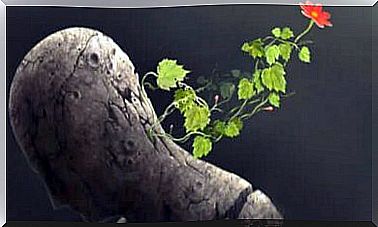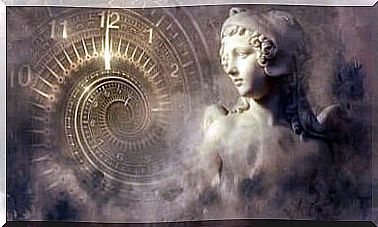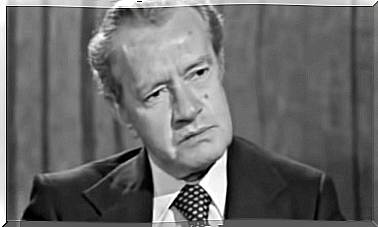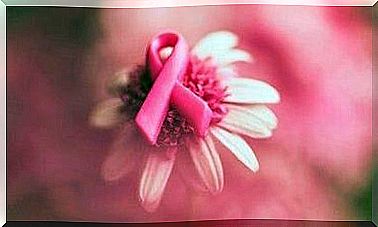Biography Of Paul Cézanne, The Great Hermit Painter
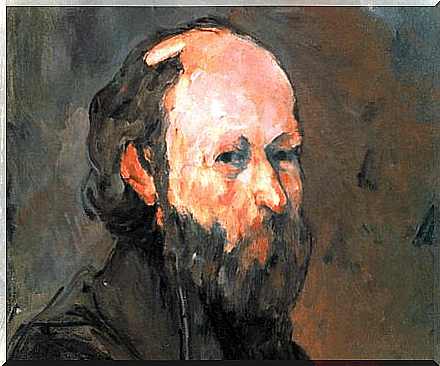
Today we’ll talk about the biography of Paul Cézanne, a French painter who many consider a pioneer of the open brushstrokes characteristic of post-impressionism. His work formed a bridge between late 19th century impressionism and the new line of artistic research of the early 20th century, cubism.
His mastery of design, tone, composition and color that surround his work are very characteristic. His way of painting is unique and can be easily recognized around the world. Both Henri Matisse and Pablo Picasso were heavily influenced by Cézanne.
Childhood and youth from the biography of Paul Cézanne
The famous painter Paul Cézanne was born on January 19, 1839 in Aix-en-Provence, France. His mother seems to have been the main influence in his early years, for his vision of life and art.
His father, Philippe Auguste, was the co-founder of a bank that prospered throughout the artist’s lifetime. This company provided the painter with a financial security that was not common at the time and that most of his contemporaries did not enjoy. Towards the end of his life, the family business left the painter a great legacy.
He attended primary school together with his younger sisters Marie and Rose. Later, he continued his studies at Saint Joseph School in Aix.
In 1852, Paul Cézanne entered the Collège Bourbon, where he met and became friends with Émile Zola. This friendship was decisive for both men. With youthful romance, they envisioned successful careers in Paris’s burgeoning art industry: Cézanne as a painter and Zola as a writer.

start of career
Paul Cézanne’s biography indicates that he began studying painting and drawing at the École des Beaux-Arts de Aix in 1856, but his father opposed his artistic career. In 1858, his father convinced him to enter the law school at the University of Aix-en-Provence.
Cézanne continued his law studies for several years. However, he pursued these studies simultaneously with the École des Beaux-Arts de Aix, where he remained until 1861.
In 1862, after a series of bitter family disputes, the aspiring artist received a small allowance and was sent to study art in Paris. He had planned to live with Zola.
He wanted to enroll at L’école des Beaux-Arts in Paris. However, your request was rejected. Therefore, he began his artistic studies at the Académie Suisse.
the circle of artists
The Académie Suisse was a studio where young art students could work with live models for a very modest monthly fee. There, Cézanne met painters such as Camille Pissarro, Claude Monet and Auguste Renoir.
His painting at that time had an unbridled and rude romantic style. In his paintings of the time, Cézanne showed a certain predilection for themes such as violence and eroticism. A style completely different from his more mature works that would consecrate him as a painter.
All the young people at the Académie Suisse were also artists with financial difficulties. They would soon be among the founding members of the nascent Impressionist movement.
Although Cézanne was inspired by his visits to the Louvre and, in particular, by studying Diego Velázquez and Caravaggio, he doubted his vocation after five months in Paris. So he decided to return to Aix and work in his father’s bank, although he never dropped out of art school.
In 1869 he met Hortense Ficat, a model and seamstress, who became his mistress and later bore him a son, Paul, born in 1872. Paul Cézanne kept them a secret from his family; he was afraid of his overbearing father’s reaction. Finally, he married Hortense in 1886, shortly before his father’s death.
In 1886, Cézanne quarreled with Zola over what he interpreted as disguised references to his own failures in one of the writer’s novels. As a result, he broke off relationships with his oldest supporter.
Paul Cézanne in Aix, the most productive years
In the same year, he inherited his father’s wealth and finally, at age 47, gained financial independence; but socially he remained isolated. After his father’s death, he inherited the family property ‘el Jas de Bouffan’.
The property appears in many of his paintings, and from that time on, Cézanne lived mainly in Aix. He devoted himself to some of his favorite subjects: portraits of his wife Hortense, still lifes and, above all, the landscape of the province, especially Monte Sainte Victoire.
Cézanne was interested in the underlying structure. Thus, his paintings rarely give an obvious indication of the time of day or even the season portrayed.
His later paintings are more composed and open, imbued with a feeling of air and light. The third dimension is created through perspective or shortening, but also through remarkably subtle tonal variations.
In 1872, he settled in Auvers sur-Oise, near Pontoise, where Camille Pissarro lived. There, Cézanne began a long and fruitful partnership with Pissarro. In the last year of his life, he still called himself “Pissarro’s student”.

Color and light in your paintings
Many of Cézanne’s early works were painted in dark tones applied with heavy, fluid pigments. In this way, he followed in the wake of the romantic and capricious expressionism of previous generations.
Under the tutelage of Pissarro, and in a short period of time between 1872-73, Cézanne changed from dark tones to light tones. In addition, he began to focus on scenes of farms and rural villages.
He exhibited with the Impressionists in 1874 and again in 1877. However, Cézanne never identified with the Impressionist group or fully adopted its aims and techniques. He was more interested in the structural analysis of nature.
He walked a lonely and difficult path towards his goal of an art that did not superficially appeal to the eye, but to the mind. This art would combine the best of the classic French tradition of structure with the best of contemporary Realism.
His work remained virtually unknown throughout his life. In 1895, Ambroise Vollard, an ambitious Paris art dealer, organized an exhibition of Cézanne’s works, which were successfully promoted in subsequent years.
By the time of his death in 1906, Cézanne had attained the status of a legendary figure.
The legacy of Paul Cézanne
When looking at Cézanne’s late work, it is impossible not to notice the emergence of a unique artistic approach. Cézanne offered a new way of understanding the world through art.
With his reputation constantly evolving in the last few years of Paul Cézanne’s biography, a growing number of young artists have been influenced by his innovative vision. Among them was the young Pablo Picasso.
Under the influence of Cézanne, Picasso would soon lead the Western tradition of painting in an entirely new and unprecedented direction.
It was Cézanne who taught the new generation of artists to release the form of color in their art . Thus, they created a new subjective pictorial reality, not simply a servile imitation.
